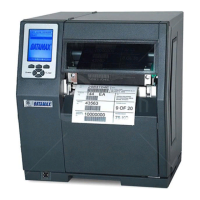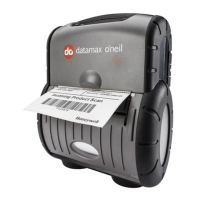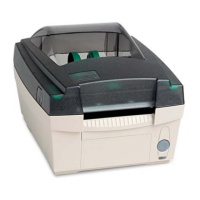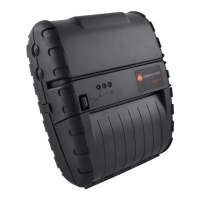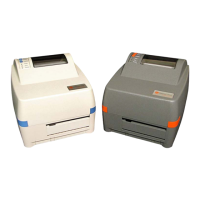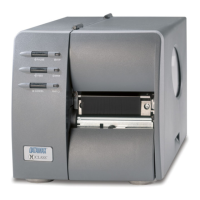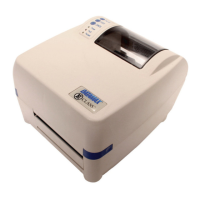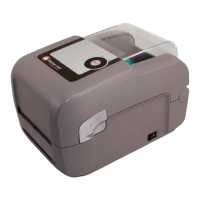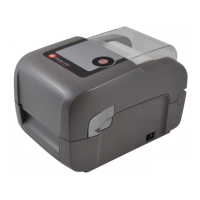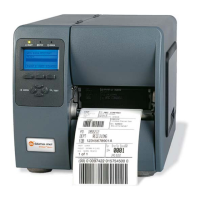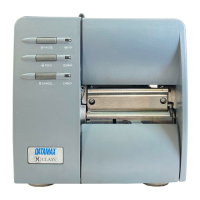What does 'TEMPERATURE PAUSE' mean on Datamax H-4212X Printer?
- SSusan HancockSep 8, 2025
Wait for the printhead to cool. Afterward, printer operations will automatically resume when the printhead reaches an acceptable temperature.
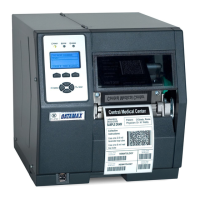
What does 'TEMPERATURE PAUSE' mean on Datamax H-4212X Printer?
Wait for the printhead to cool. Afterward, printer operations will automatically resume when the printhead reaches an acceptable temperature.
What to do if Datamax Printer shows '24V OUT OF TOLERANCE'?
No action is required. If the problem continues, cycle the power OFF and ON.
How to fix Datamax Printer that skips labels while printing?
Check the following: Perform calibration; adjust the Media Sensor; if the label format is within 1/8 inch of the media’s edge, reduce or move the format slightly.
What does 'GAP MODE WARNING LOW BACKING' mean on Datamax H-4212X?
No action is required. During calibration, labels mounted on a transparent liner or notched media may give this indication. A slight delay in the ‘Out of Stock’ message may occur.
How to manage pending host changes on Datamax Printer?
To save these changes, send a host reset command (in DPL); or, to discard the changes, perform a soft reset.
What to do if Datamax Printer display is blank but backlight is on?
Check the following possibilities: The display contrast may be set too low (press and hold the MENU Button until the display contrast is acceptable); or disconnect any device attached to the optional SDIO Slot or USB Host Port.
How to improve print quality on Datamax H-4212X?
Check the following: the Leveling Cam for correct adjustment; the Heat and Print Speed settings; if using thermal transfer, the compatibility of the media and ribbon combination; and for a dirty Printhead.
What to do if Datamax Printer is not printing with direct thermal media?
Test the labels to be sure they react to heat then proceed accordingly: • If reactive, increase the HEAT setting in the software program or through the menu (see Section 4.2.2); or, • If not reactive, install different media.
What to do when Datamax H-4212X displays 'RIBBON LOW'?
Load a new roll of ribbon soon.
What to do if Datamax Printer displays 'REWINDER FULL'?
Unload the internal rewinder soon.
| Print Resolution | 203 dpi |
|---|---|
| Print Technology | Thermal Transfer or Direct Thermal |
| Print Speed | 12 ips |
| Media Width | 1 inch to 4.65 inches |
| Media Thickness | 0.0025 inches to 0.0100 inches |
| Connectivity | USB, Serial, Ethernet |
| Max. Print Width | 4.09 inches |
| Maximum Print Width | 4.09 inches |
| Maximum Print Length | 99 inches |
| Label Width Range | 1 inch to 4.65 inches |
| Label Thickness Range | 0.0035" - 0.008" (0.09 mm - 0.2 mm) |
| Power Requirements | 100-240 VAC |
Introduces the H-Class printer and its manual content.
Lists standard features available across different printer models.
Details optional features offered for the printer, with model specifics.
Instructions for safely unpacking the printer and checking contents.
Steps for setting up the printer, including power and interface connections.
Procedures for loading different types of media into the printer.
Instructions for loading thermal transfer ribbons correctly.
Procedure for fine-tuning the printer for media using a quick calibration method.
Describes the structure and branches of the printer's menu system.
Configuration options for media type, sensor type, label length, and width.
Settings related to print quality, speed, heat, and offsets.
Configuration for various printer options like modules, sensors, and cutters.
Procedures to ensure correct media detection and sensor function.
Step-by-step guide for standard media sensor calibration.
Different levels of printer resets and how to perform them.
Recommended maintenance supplies, schedules, and methods for printer upkeep.
Guidance for resolving common printer problems and issues.
Explains warning and fault messages displayed when alerts or problems occur.
Details unique parameters and features for different printer models.
How print controls like heat, speed, and contrast affect output quality.
Defines supported file types and their requirements for printer processing.
Table detailing printhead resolutions and maximum print widths for various models.
Lists speed ranges and default settings for different printer functions and models.
